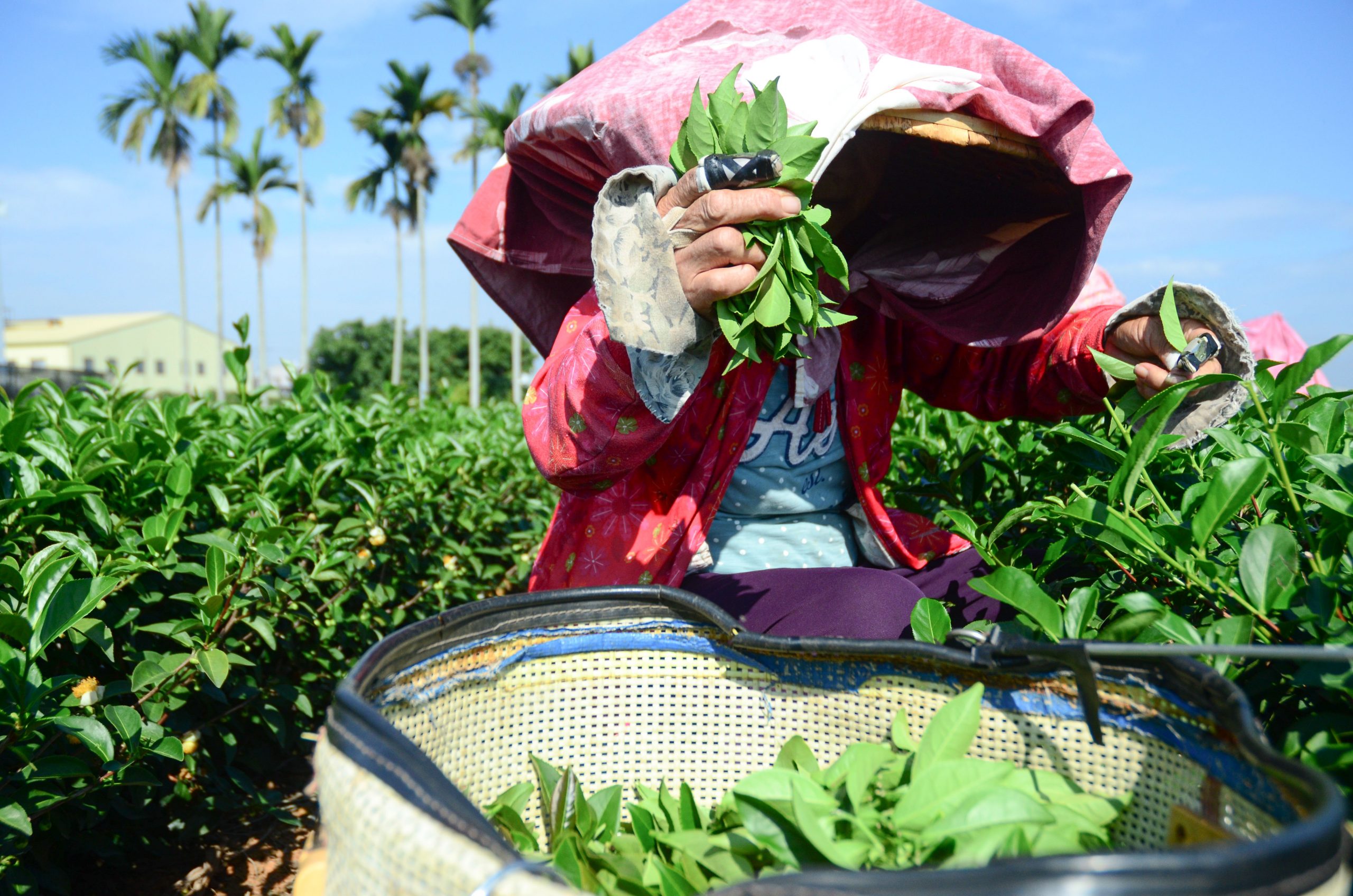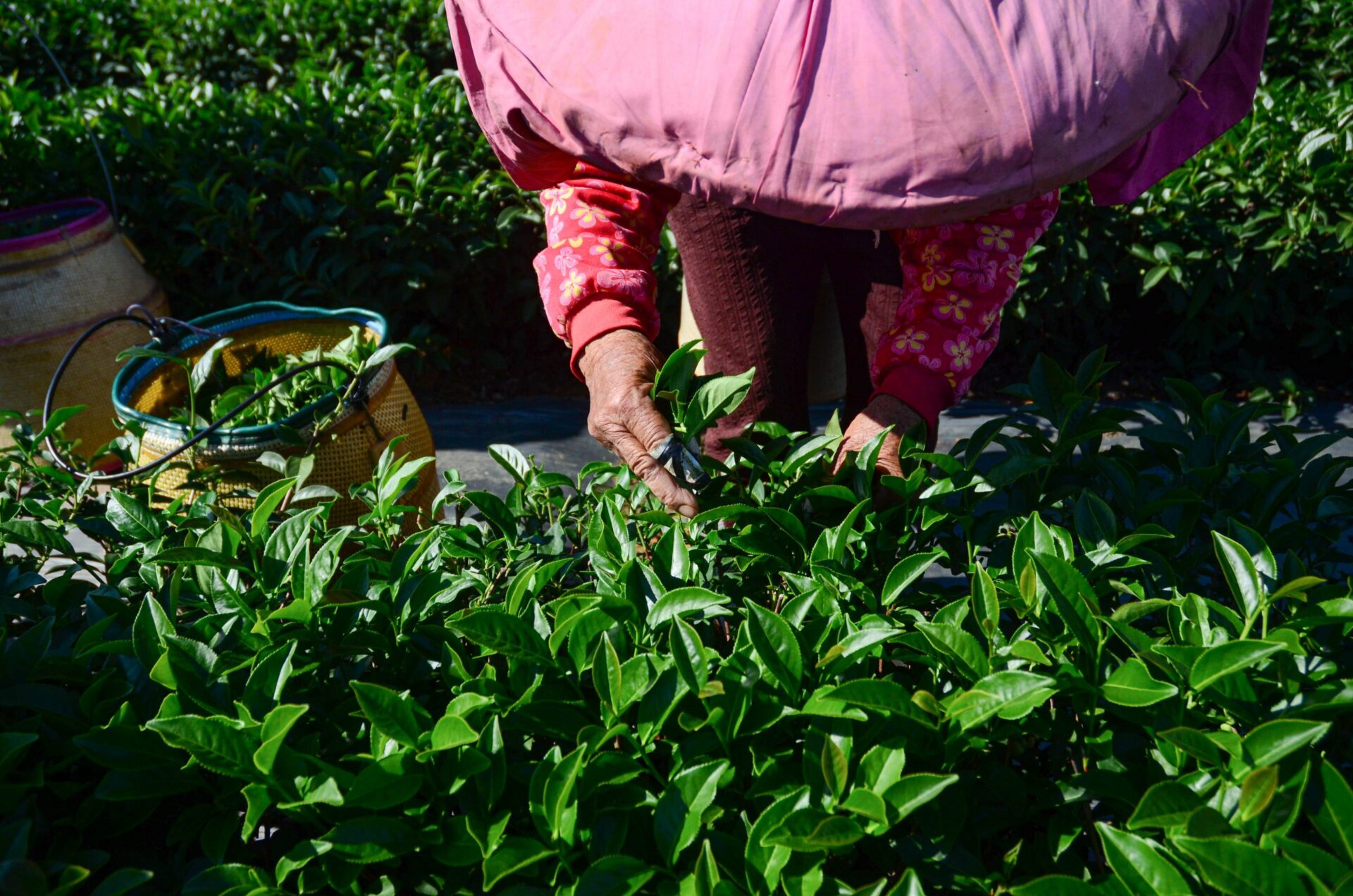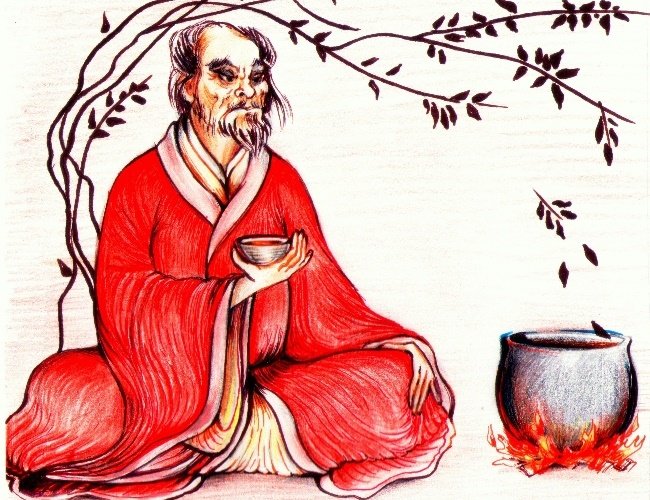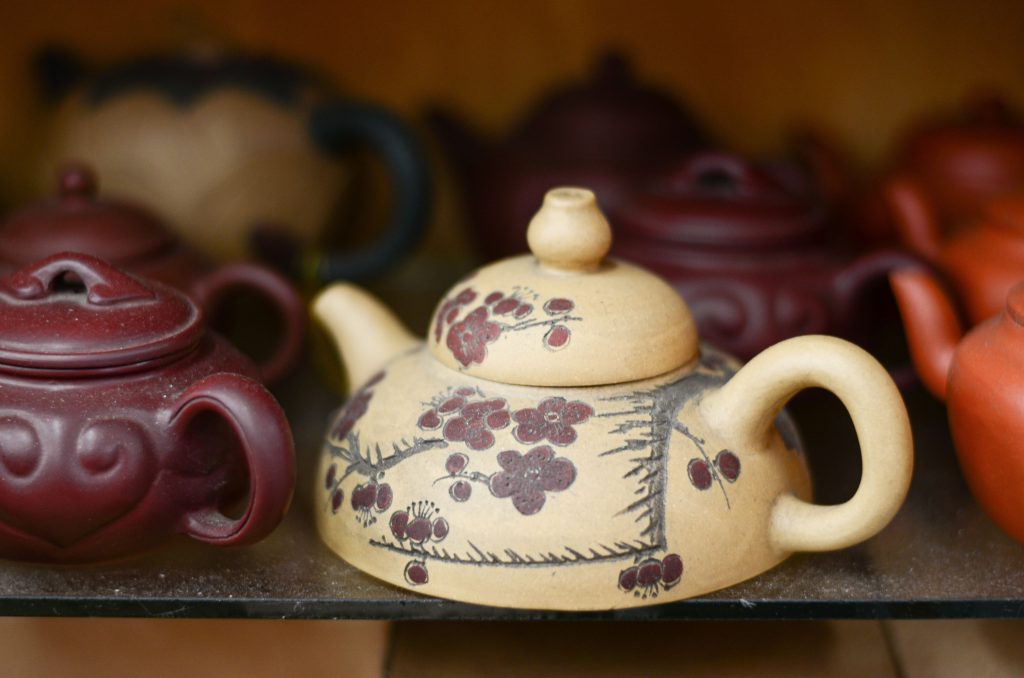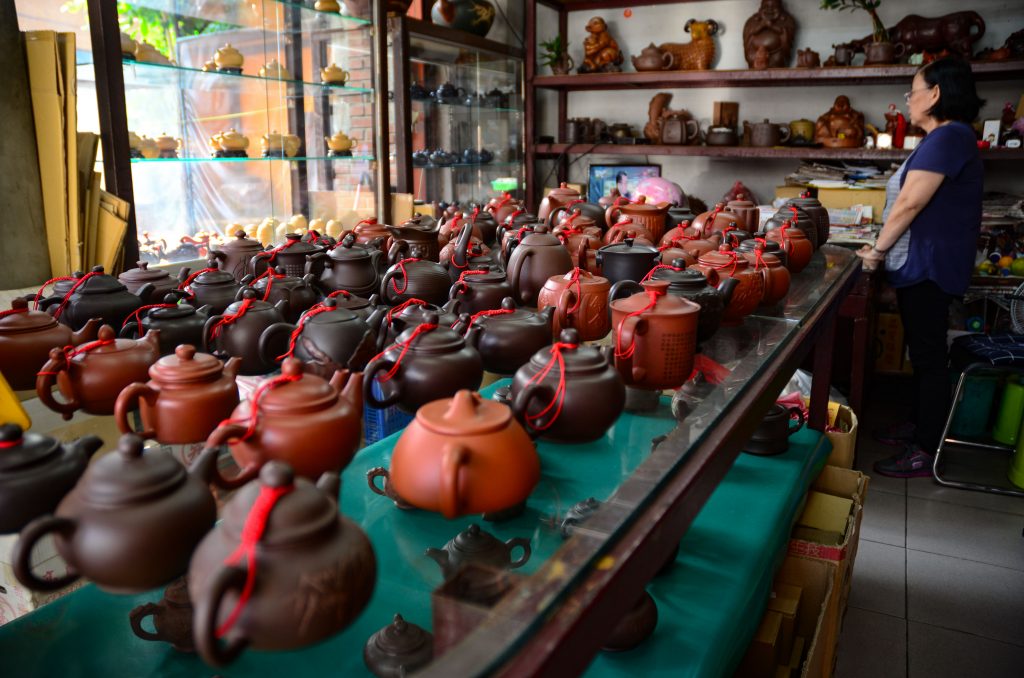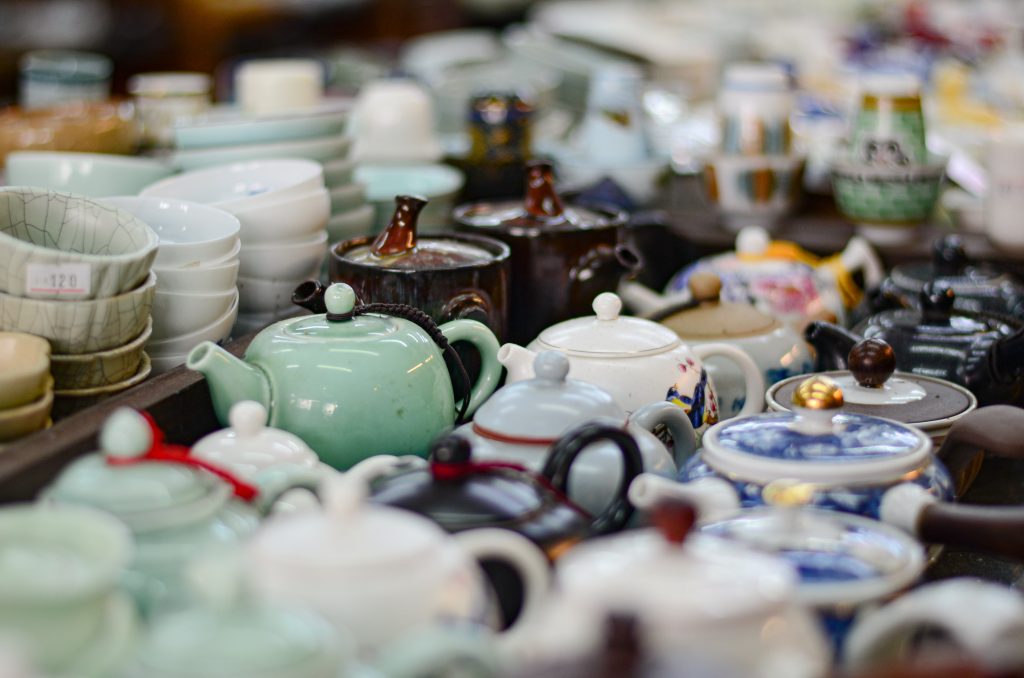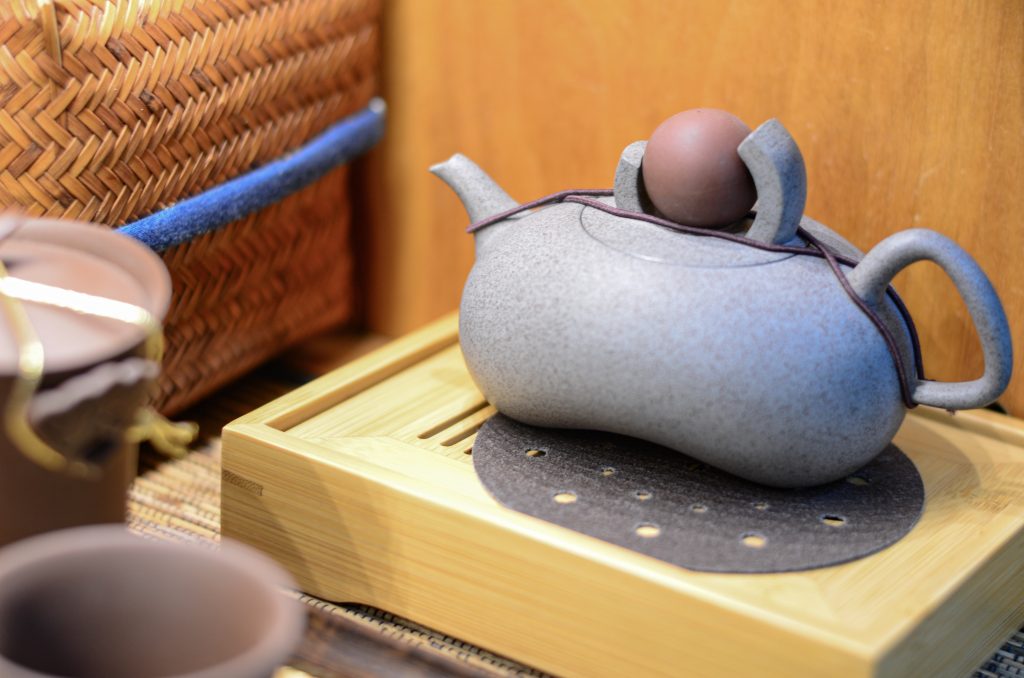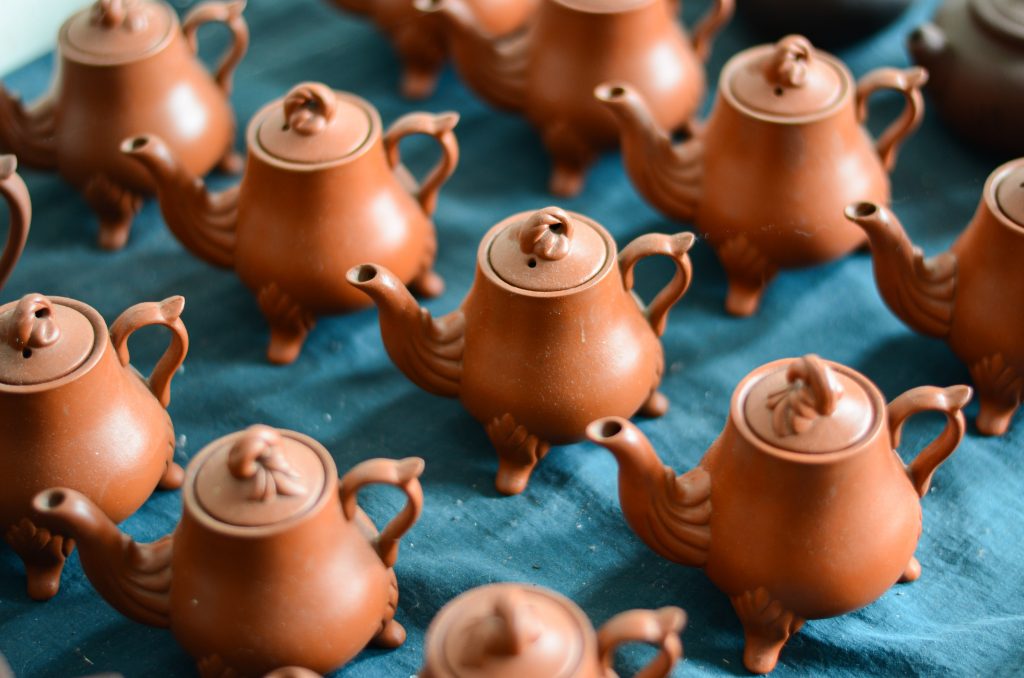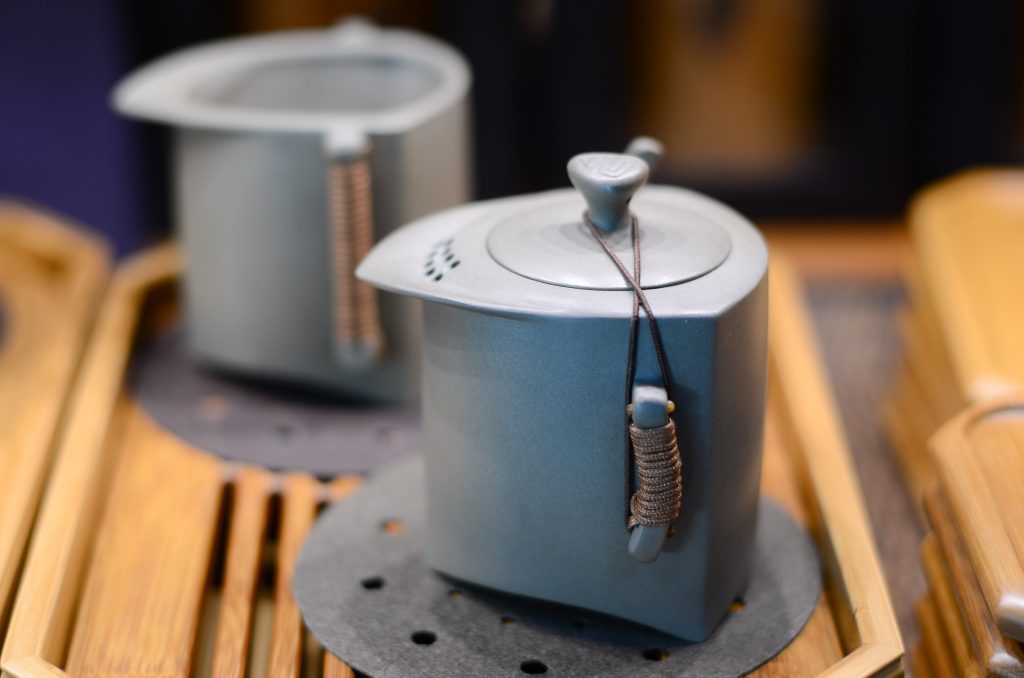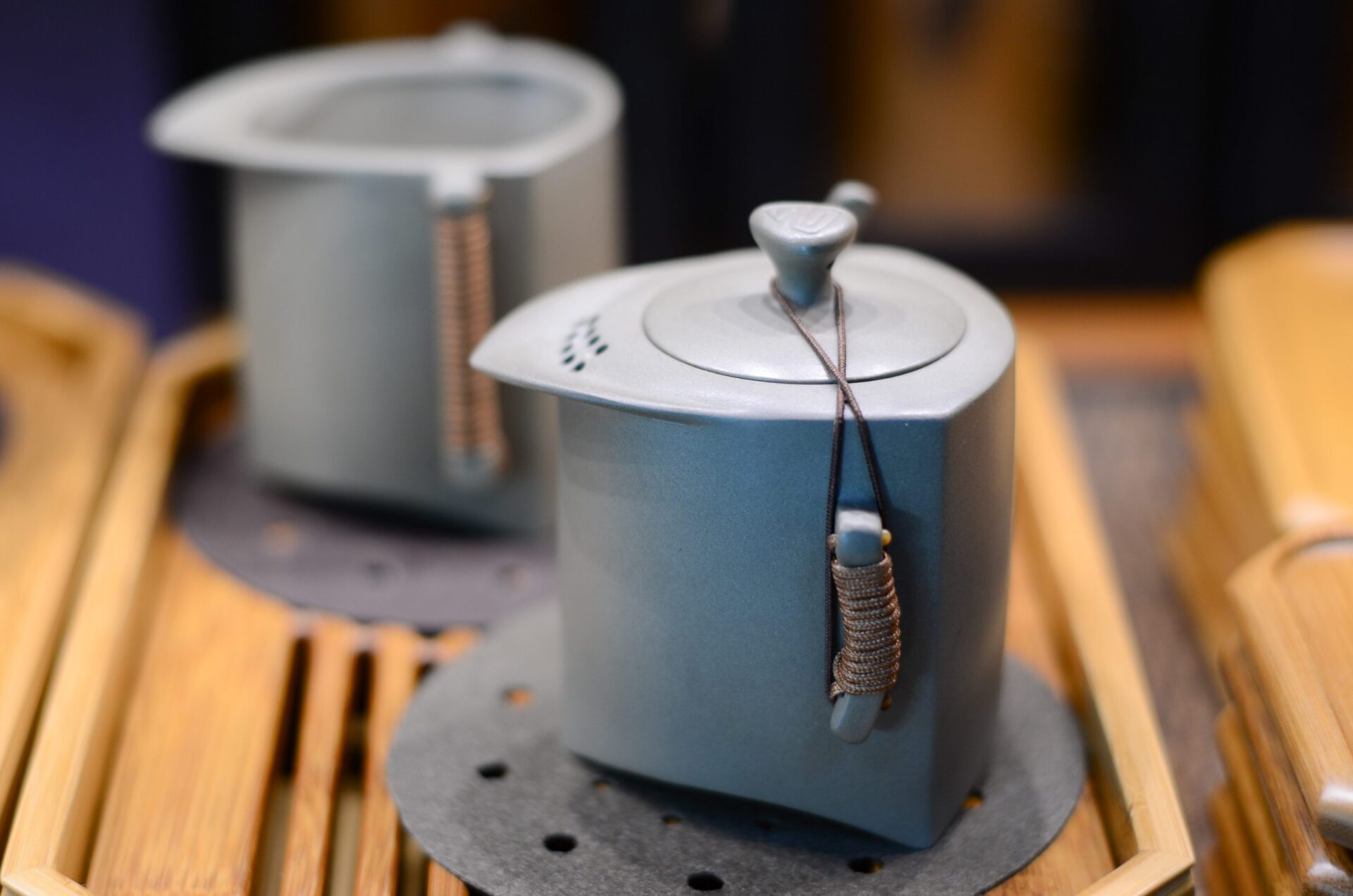A Cup Full of Stories
By Lizane Louw

Photo Lizane Louw
I crossed Taiwan in search of tea stories. On one of my journeys, we took a road trip into the mountains of Nantou to explore a unique tea village where the smell of freshly baked Oolong Tea hangs thick in the air. We stomped barefoot in fresh mud and got lost in tiny teapots with tea masters. That night when we went to bed in the round red capsule house on the tea plantation, the moon turned into a teacup.
Impossible? But this is a true (tea)story.
Why I travel
This tea story starts with a question I often get asked, “Why do you travel?”
So, with this story, I will explain why I travel and have been travelling for over 25 years. The short answer is that I travel to find myself. Not finding my identity, not finding out who I am, but finding myself in interesting situations. I travel to find…
I travel to find out what I like and what I don’t like. I travel to eat, taste, smell, drink tea (and coffee and wine), and travel to see and photograph. I travel to learn.
Getting older and wiser, with a lot of air miles and sea miles behind my back, I can look back and reflect on what journeys were most memorable and what experiences I gravitate too. One thin line that is woven through all my experiences in life, is my love for tea.
I am learning to look and see with my journeys with tea. With tea, time stops; I am a student of the tea leaf. I am learning Cha Dao.
My leaf adventures took me to The Finger Tea Story House in Taiwan. This story house is located on Song Bo Ling, Ming Jian Shang in Nantou County. The journey to the story house takes you on a 45 min high-speed train ride from Taoyuan to Taichung.
You must patiently travel another hour or so on a scenic route into the mountains of Nantou. This road trip into the mountains took me past yam, pineapple and dragon fruit plantations. They also grow ginger in the region. In addition, this part of the island produces some of the best Oolong Tea in the world.

Finger Tea Story House Tea Plantation is in Mingjing Township, Nantou, central Taiwan. The HRS, High-Speed Rail, jets down to Taichung from Taoyuan in 45 min. You can travel to Mingjing with the Scenic JiJi train or drive from Changhua. Source: Rome to Rio.

“Two Fingers” and tea stories
Mingjing is where the history of tea starts in Taiwan; these plantations are the origin of Taiwan’s tea.
The Finger Tea Story House is 480 m above sea level. Mingjang has over 2000 hectares of tea plantations, and it is also the area with the most significant output of tea production in central Taiwan. The region produces four types of tea. Four Season Tea, Golden Daylily Tea, Green Jade Tea and Oolong Tea. For the Oolong tea, I travelled 200 km to the heart of the tea valley.
In the Finger Tea Story House, I discovered another legend of tea. “Shen Nong Shi (The Emperor of Five Grains) sampled one hundred kinds of grass and was poisoned by 72 of them daily. He had a pair of ox-like horns and a transparent, crystal clear, ox-like belly. One day whilst sampling one hundred kinds of grass, some poisonous grass poisoned him. His crystal belly turned black, and he became ill. He randomly picked a leaf from a surrounding plant and ate it. The tealeaf was moving up and down in his turbid, black belly, and his belly turned transparent, crystal clear. Shen Nong was curious about this leaf that did the magic to his belly. He discovered that it was the “tea leaf”.
Since that discovery, it was believed that the tealeaf had a detoxification effect; this belief passed from generation to generation.
A long history with tea
Yang Kuo-Chen started the Finger Tea Story House in 2013. But the tea tradition of this family runs over a hundred years. “The history of the family is about four generations. The second generation had their teashop under the Japanese occupation, “explains Yating Yang as she walked us through the Tea Museum.
“When he was eight years old, the owner, Yang Kuo-Chen, was making tea with his granddad, and by accident, he lost two fingers; two fingers got cut off by a rolling machine. So our story house here we named “Two-finger Tea” because the story lost his two fingers.”
Yang lost half his ring finger and middle finger in that accident. However, his accident did not keep him from loving tea; it inspired more challenging work and an expansion of their brands into “The Finger Tea Story House”.
“There is a statue of his hand; you will have good luck if you rub it or touch it. “
Zhù hǎo yùn” explained Yating, our story guide. She is very professional and carefully chooses her English words. Now and then, she uses Google translate to help with her English. I stopped, rubbed the statue with two missing fingers, and wished to have more luck.
The story house started as a tiny business. Today is 100 years old. First, Chang Sung Tea expanded into other labels and the bubble tea business. Then, two very famous Taiwanese brands, Tea Top and Tea Struck. Tea Top is a household bubble tea brand, not only in Taiwan, where they have 120 shops but also in the US, where they have ten shops.
As we walked through the museum, I got lessons on tea plants and tea leaves and various teas. Finally, we stopped at Pu’er Tea. Pu’er tea is a fermented black tea from a village named Pu’er in China. I am the proud owner of a brick of aged 13-year-old Pu’er from Yunnan, China. The young tea master was very impressed with my knowledge.
This story house and farm have old tea distinguished from Pu’er Tea and 40-year-old tea for sale. These teas are costly collectors’ items.
The Finger Tea Story House brands have won many competitions. Nantou has the best tea in Taiwan, and the brand wins 20 categories in the biggest tea competitions in Nantou every year. Their winter and spring tea won first place in tea competitions 25 times. They are seen as tea champions. All the teas planted and harvested by Finger Tea are organic.

The healing leaf and more tea stories
“Tea is good for your health and good for your teeth. Tea has fluoride, which is why it is good for your teeth. The tea plants absorb the fluoride from the soil, so tea has a high percentage of fluoride. But it can make your teeth yellow,” Yating explains.
“Grandpa used to say that you don’t have to brush your teeth; you can just drink tea. You can just swizzle the tea in your mouth. Then, you rinse your mouth with tea brewing water.
Tea also contains anti-oxidant actives such as polyphenols and catechin, which inhibit the growth of bacteria and viruses. Therefore, it can prevent you from being unwell,” with those words, I realized that I was speaking to a family member; she smiled as I asked if Mr Yang Kuo-Chen was her grandfather. With that smile, she became more relaxed in her family history presentation.
My thoughts on tea continued as we walked; I thought of the health benefits and what I had read. Nutrients in tea transform into a large quantity of Gallic Acid that can stimulate dopamine secretion. Dopamine can stabilize emotion.

Yating’s grandfather performed fortune-telling with tea. He believed that a magnetic field in every man. When that magnetic field turns weak, drinking tea can supplement and turn it back to its fullness. According to the stories retold to children in this family, you can also change your fortune from bad to good.
You have to drink tea according to your age. An extensive chart on the wall shows what tea you drink at what age. For example, I am 40, so I need to drink High Mountain Oolong tea. “When you are in your 20’s and 30’s, you can’t drink high mountain oolong tea. You must wait till you are older, and then when you are in your 40’s, and you drink High Mountain Oolong tea, and then you come back to lower-level teas, it does not taste good,” says Yating, who I now have figured out is the owner’s daughter. She shares tea stories as we walk through the museum.
Tea Chai Cha
I have travelled the world for tea. I had Masala Chai in India; it is a black tea with milk, sugar and spices. I had Darjeeling tea in India, this tea is grown in West Bengal, and you also drink it without milk.
I learned to drink Chamomile tea in early evening teas in Paris, France, Chamomile, and herbal tea infusion. (Even though I am unsure if Chamomile originally comes from France). I had 50-year-old Pu’er Chinese tea in my favourite teashop in Yinge and had 40-year-old tea in a tiny village called Mingjing, the tea heaven of Taiwan.
I have always wondered why they would call tea by different names, then finally, with reading up, a whole world opened. If you get your tea by sea, it is called “tea”; if you get it from the land, it is called “cha”.
So I finally figured out that my favourite teas, Masala Chai and High Mountain Oolong Cha, are both from the land, which means that these teas are grown locally and distributed by land, and I was lucky to drink some of the best-handpicked teas in the world. So, the langue then indicates where we get our tea. If you get your tea by see it is tea, thee, te or tee. If you get it by land, it is chai, chay or cha.

Old leaves and a young leave
Most regular Oolong tea is harvested by machine, but High Mountain Oolong Tea is harvested by hand. When tea is harvested by hand, it is more expensive.
“When you harvest tea, you have to harvest them young. The very first leaves have to be harvested. The smell is so natural earthy; it is delicious, still pure, and has not been exposed to the elements and gives the best quality teas,” explained Yating.
The Story House’s “Tea Theory to Relativity” is explained via comics on the Story House Tea Museum walls. Each picture is drawn in a comic cartoon style. It is translated into English on a pamphlet I got given.
“The most interesting is distinguishing between an old leaf and a young leaf. The old leaf is likened to an old man taking a piss, but the pee dripping downwards to his shoes. A new leaf is likened to a young kid taking a pee and projecting across a stream. In Taiwanese, this means a new leaf has more strengths and is better.” I laugh out loud. Sometimes the forwardness of this culture surprises me.
The tea-making process
We continue to the tea-making process. “Oolong tea making requires several steps. First, you pluck, then outdoors; the outdoor withering takes place, then indoor withering, stir dry the tea leaves, roll the tealeaves, grade the tea leaves, and then grade sample the tea leaves. This process was manually conducted; nowadays, the tea process is mechanized; the output is more tea and the process much faster,” Yating continued.
“Green tee, oolong tea and black tea come from the same plant. From the same plant, you can make all three kinds of tea. It is the same plant, Camellia Sinensis,” she explained.
The distinction between these different teas is not from other plants but how the leaves are treated after being harvested. “It also depends on the fermentation process.”
I was shocked to learn that all teas come from the same plant. My story went full circle back to my teacup.

A teacup full of tea stories
The story goes that the great-grandpa told his 8-year-old son about the finger-cutting machine that rolled off his fingers. “How lucky you are, my dear grandson, that you were not using your genitals to weigh the iron chains”. We laughed and had another GongFu ceremony.
So many stories. This is an actual story house.
I have tasted a variety of teas in the village, sat down with two teamsters and learned about tea.
A student of the tea leaf
Visiting the storied house was a mind-altering experience. I am learning more about this leaf. I learned so much about tea, tea production, and stories about tea and the MingJing plantations. Again, I found a world of tea stories at the bottom of my teacup.
As we sat around the fire in the tea plantation in front of our round tubular room, I smelled the fresh Oolong Tea plantations. The smells were thick in the air, pineapple, peach and guava. I looked up at the sky and what I saw made me smile. The bright white moon turned into a teacup.
I am a student of the tealeaf. My journey is to learn the Cha Dao.


Enjoyed the journey with words and exploring with me? Share, tweet, or email the story!
